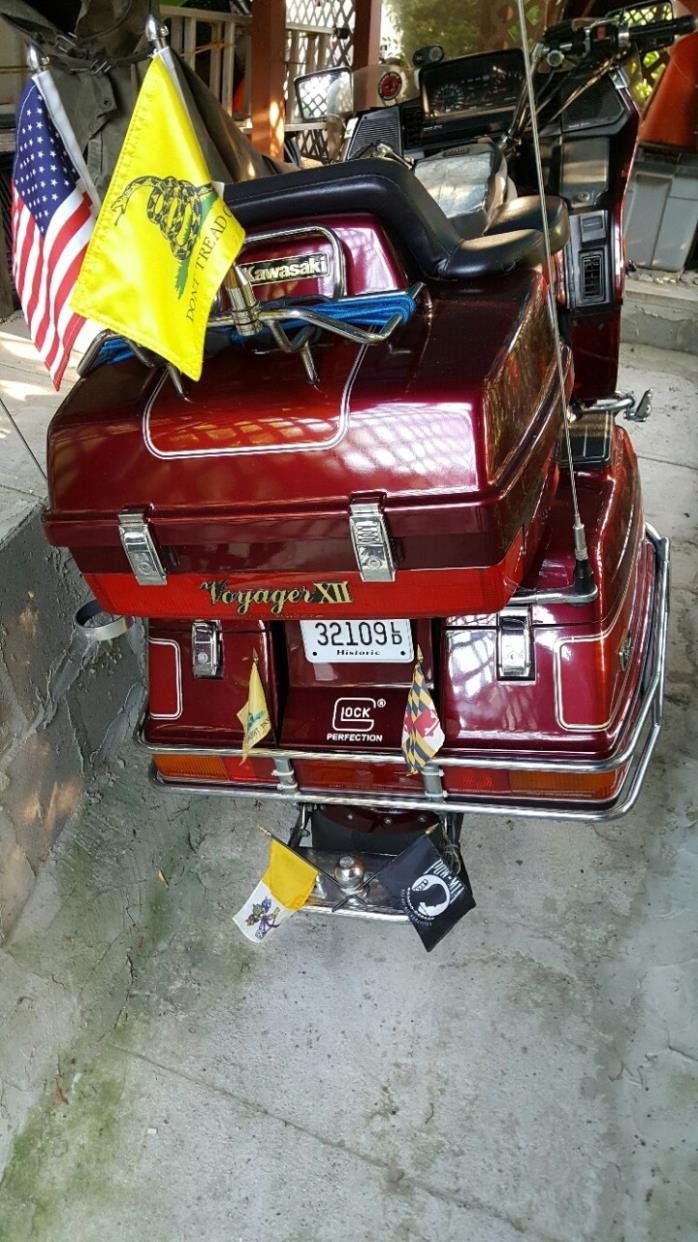Request Price
Francis Creek, Wisconsin
Category
-
Engine
-
Posted Over 1 Month
1991 Kawasaki ZG 1200 Voyager XII, Nice 1200cc touring bike! - Kawasaki's Voyager is the quickest in its class. The liquid-cooled, 16-valve, five-speed inline-four provides acceleration both from 0 to 60 mph and through the quarter-mile that whips every other big-rig tourer. It complements that impressive speed with an almost ethereal smoothness (courtesy of twin gear-driven counterbalancers), a broad powerband, tack-sharp carburetion and instantaneous throttle response. The Voyager's the class lightweight, too—at least of the big Japanese tourers. Only Harley's FLTC and FLHTC and BMW's K100LT scale under the Kawasaki's 803-pound wet weight. But then, the Voyager entered the high-stakes touring game in 1986 with those attributes, as the quickest, least expensive and one of the lightest. Not much has changed since then. In 1987 the Voyager gained a cruise control, rear speakers for the AM/FM cassette deck, winglets on the fairing's trailing edges and different paint. Otherwise, the firm's flagship tourer remains the same, with steel-tube frame, triple-disc brakes, manually adjustable suspension, 16-inch front and 15-inch rear wheels, hydraulically adjusted valves and a multitude of adjustments for rider and passenger accommodations. The fairing offers good wind protection for average-height riders, the riding position is roomy and relaxed and, set in the lower range of its adjustment, the suspension lets the bike fairly float over a wide variety of road surfaces. There's abundant small-item storage, the stereo offers decent sound quality plus a host of adjustments to amuse the rider, and the cruise control works competently. Once a rider reaches the bright lights of the big city, he'll be thankful he's not paying for some things most other tourers have aplenty; namely, weight and clumsy low-speed handling. The low mass, 16-inch front wheel and tillerlike handlebars help yield remarkably light, quick steering, making the Voyager one of the most agile touring bikes at slow speeds. That same steering quickness, though, exacts a penalty. It's tough to maintain a precise course at slightly more than a walking pace, especially if the bike's burdened with a full load and passenger. Many of those traits characterize the Voyager's twisty road behavior as well. The bike feels nimble, with slot-car steering response that gets it in and out of corners quickly. Such assets help rank Kawasaki's Voyager—again—near the top among touring bikes for back road handling. Still, a rider needs to exercise a gentle hand at the helm. Flicking the bike into turns makes the front end feel rubbery, and discourages further exploration of the rather limited cornering clearance; the footpegs touch down first and at a lesser lean angle than almost any other modern motorcycle. For a solo rider, setting the suspension to eight psi in the front, 25 psi in the rear (5.7








